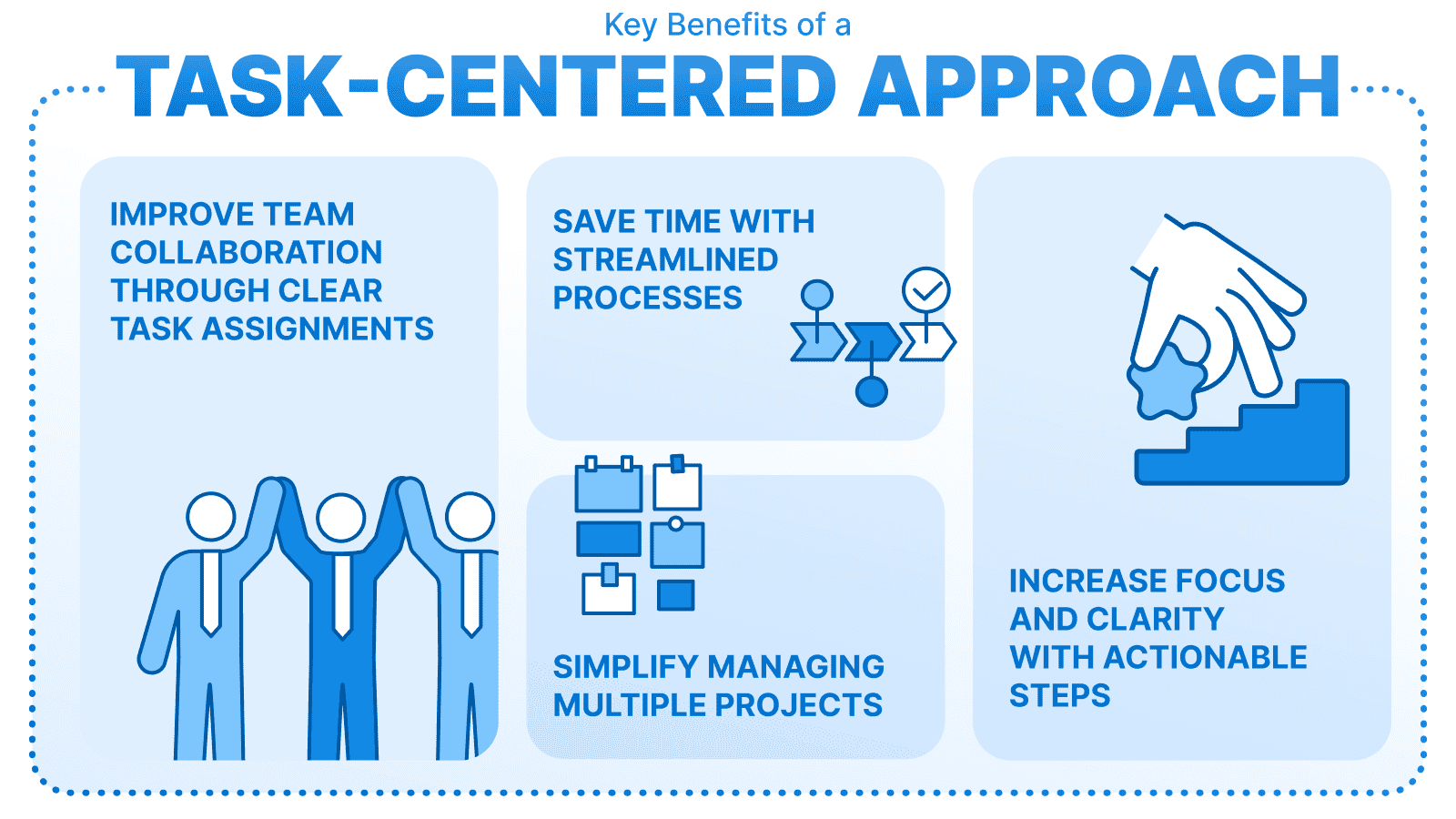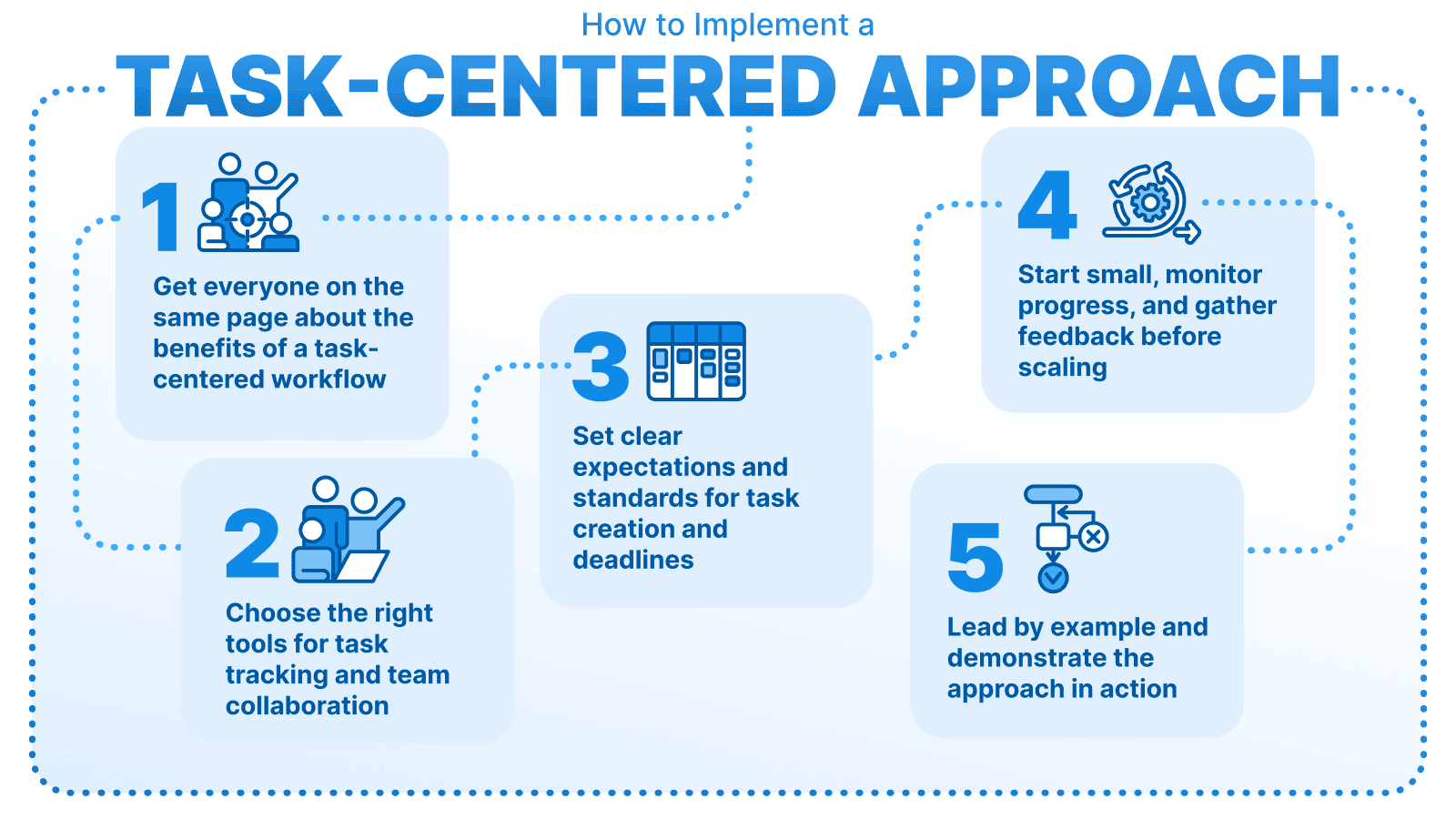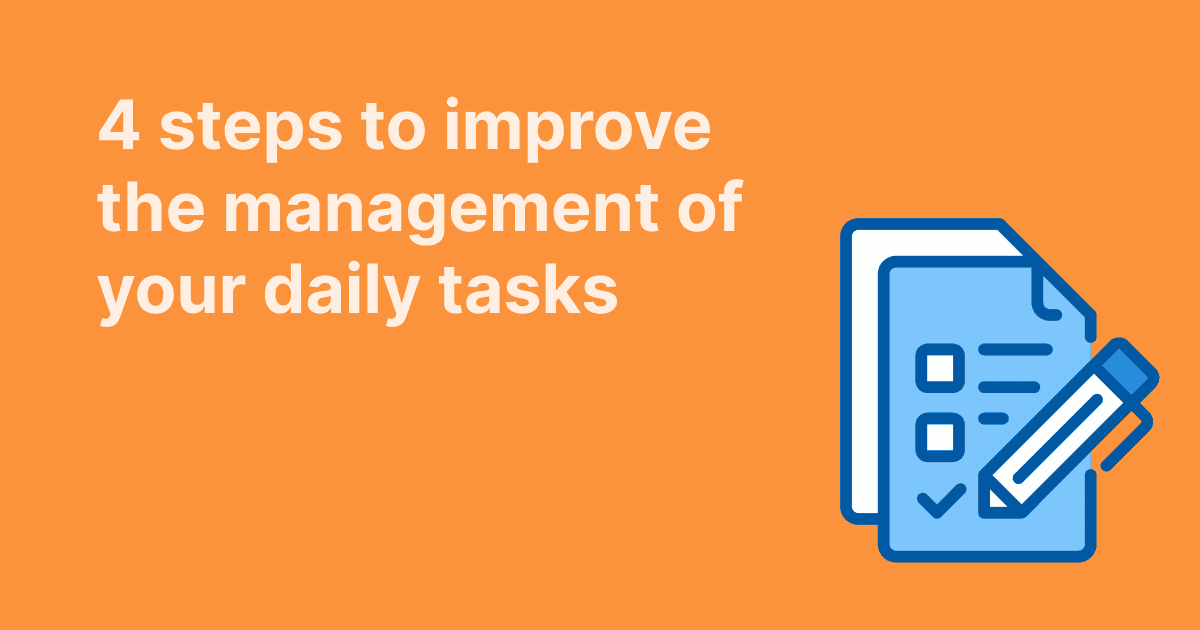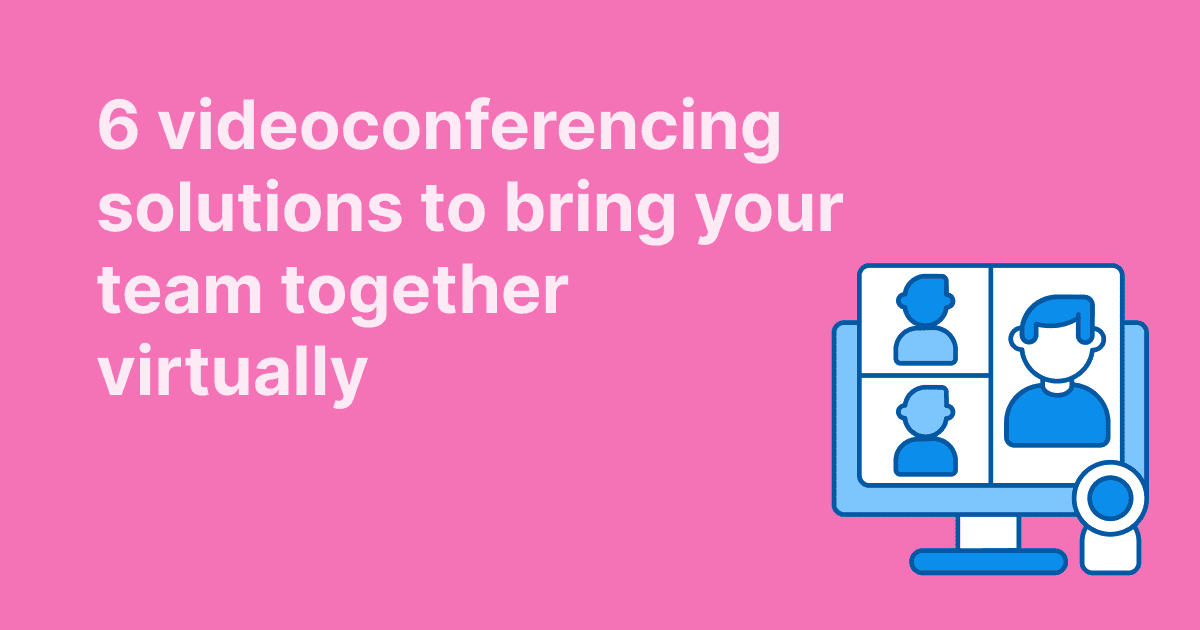
Think about the last time you worked on a big project. Did it feel like your to-do list was spiraling out of control, sticky notes were cluttering your desk, and deadlines somehow kept sneaking up on you?
This is exactly the kind of chaos a task-centered approach is designed to fix. Rather than getting lost in the big picture, this approach focuses on the real drivers of productivity—breaking projects and tasks into manageable steps, assigning tasks with clarity, and tracking progress in real time.
And it’s not just for project managers. Whether you’re planning a major campaign, juggling day-to-day responsibilities, or even organizing a grocery list, zeroing in on individual tasks instead of the big picture can completely change the way you work.
In this article, we’ll explore how the task-centered approach works, the benefits it brings to your productivity, and how tools like task management apps and checklist templates can help you stay ahead of the curve.
What is the task-centered approach?
At its core, a task-centered approach is exactly what it sounds like: focusing on tasks as the building blocks of productivity. Instead of viewing a project as one massive undertaking, this method breaks it into smaller, actionable components. It’s like building a puzzle, piece by piece, you get closer to the complete picture.
What makes this approach stand out is its simplicity. By focusing on tasks, it shifts the emphasis from abstract goals to tangible actions. For example, instead of saying, “Finish the marketing campaign,” you break it into steps: “Write the email copy,” “Design the graphics,” and “Schedule social media posts.” This structure helps clarify what needs to happen and when, making it easier to keep projects moving.
How it’s different from a project-focused method
Unlike broader project-focused methods, which often prioritize overarching goals and timelines, a task-centered approach zeroes in on the smaller details. This shift creates more transparency for team members, makes assigning tasks clearer, and simplifies task tracking. For example, while a project-focused method might track progress by milestones, a task-centered approach tracks every step, ensuring nothing slips through the cracks.
Why task-centered approach works
The task-centered approach is particularly effective for managing project tasks because it creates structure where chaos might otherwise reign. Using tools like a task checklist template or a task management app, it’s easier to break down complex work, set priorities, and organize tasks.
Let’s say you’re managing multiple projects. Instead of feeling overwhelmed, you can create a task list for each, prioritize items based on deadlines or importance, and keep everything on track.
Key benefits of a task-centered approach
A task-centered approach is more than just a method for getting things done; it’s a practical way to manage work more effectively, whether you’re working solo or as part of a team.

Here are some of its standout benefits:
1. Save time with streamlined processes
Instead of constantly figuring out what to work on next, a task-centered approach provides a clear plan of action. Tools like to-do list software and task management apps simplify the process, helping you outline priorities and track progress. For recurring activities, a task checklist template can be a lifesaver, ensuring you avoid wasting time on repetitive planning.
2. Improve team collaboration
When tasks are clearly defined, communication becomes much smoother. Everyone knows their role and responsibilities, which means fewer misunderstandings and greater accountability. By assigning tasks with specific goals, you help your team members stay aligned and productive.
3. Make managing multiple projects easier
Handling several projects at once quickly becomes overwhelming, but breaking them down into individual tasks makes everything feel more manageable. A task management app helps you organize tasks, set priorities, and adapt as needed.
4. Increase focus and clarity
When work is broken into actionable steps, it’s easier to focus on what matters most. Instead of feeling scattered, you can set goals for each task, tackle them one at a time, and build momentum with every small win.
How task-centered tools make a difference
Let’s be real, no one wants to spend half their day figuring out what they’re supposed to do next. That’s where the right tools come in. They make the task-centered approach effortless, keeping you organized and helping your team stay on the same page.
Task management apps
A solid task management app does more than just let you create a list. It helps you stay flexible and focused with features like real-time updates, and progress tracking. Need to reprioritize something? No problem, just move it up the list. These apps are built for handling multiple projects and make assigning tasks to team members clear and simple.
Collaborative platforms for meetings and tasks
If your work involves meetings (and let’s be honest, whose doesn’t?), a tool like WEDO takes things to the next level. WEDO is more than a task tracker, it’s a collaborative workspace that ties your meetings and tasks together. You can prepare meeting agendas, take real-time meeting minutes, and assign tasks as discussions unfold.
For example, instead of leaving a meeting with a vague idea of what’s next, your team walks away with a complete list of action items, deadlines, and ownership for every task. By the time the next meeting rolls around, you’re not chasing updates, WEDO’s task tracking keeps everything on point.
To-do list software
For smaller, day-to-day operations, to-do list software can get the job done. It’s like an upgraded version of those old-school sticky notes, but smarter. You can categorize, prioritize, and track your progress all in one place without worrying about losing important details.
These tools don’t just make your work easier, they make it smarter. They help you save time, avoid bottlenecks, and stay organized, whether you’re leading a team or managing your own workload.
Implementing a task-centered approach in your workflow
Making the switch to a task-centered approach doesn’t require a complete overhaul of your processes, but it does take a bit of intentionality. Here’s how you can start integrating this method into your workflow:

1. Get everyone on the same page
Start by explaining to your team what a task-centered approach is and why it works. Highlight how breaking down large projects into smaller tasks makes them more manageable, improves accountability, and keeps everyone on track. Share examples of how this method can reduce stress and increase clarity across the team. Hold a kickoff meeting to introduce the idea, discuss benefits, and set expectations for how the team will work moving forward.
2. Pick the right tools
Choosing the right tools is key. Look for software that allows for easy task tracking and clear assigning of tasks to make adjusting workflows straightforward. Make sure the tool can handle both individual and team needs, whether you’re working on a single project or managing multiple priorities. Before rolling it out, test the software with a small team or project to ensure it’s the right fit for your workflow.
3. Set clear expectations and standards
Establish how tasks will be created, assigned, and tracked. For example:
- Write tasks in plain, natural language to ensure clarity.
- Always include deadlines, even for small tasks.
- Update task progress regularly so everyone is in the loop.
Having clear, consistent guidelines makes it easier for the team to adopt the new workflow and stay accountable.
4. Start small and build momentum
Introducing a task-centered approach across the board can feel overwhelming. Instead, begin with a single project or department. Monitor how the team adapts, gather feedback, and make adjustments before scaling up.
5. Lead by example
Change starts with leadership. If you’re a team lead or project manager, demonstrate the benefits by actively using the tools, assigning tasks thoughtfully, and keeping track of progress. Your team is more likely to embrace the approach when they see it working in action.
Overcoming challenges in a task-centered workflow
Adopting a task-centered approach doesn’t mean your workflow will be flawless overnight. Challenges like shifting priorities, team alignment, and unexpected delays are all part of the process. The key is anticipating these roadblocks and having practical strategies to tackle them.
Addressing shifting priorities
When deadlines overlap or new projects are added, it’s easy for tasks to feel like they’re spiraling out of control. This is where flexibility becomes essential.
What to do: Build buffer time into your schedules and embrace tools that let you adjust on the fly. For example, if a project’s scope changes, reassign tasks or tweak deadlines in your task management tool to reflect the updated plan.
Ensuring clear communication
Miscommunication can quickly lead to missed deadlines or duplicated work. A task-centered approach depends on everyone knowing their role and how their work fits into the bigger picture.
What to do: Regularly review task assignments with the team, ensuring each one is specific and actionable. Use tools that centralize updates so no one is left guessing about what’s happening next.
Managing task overload
A well-organized workflow can still be overwhelming if the sheer volume of tasks is too high. Taking on too much at once can lead to frustration or burnout.
What to do: Be realistic about what can be accomplished. Spread tasks evenly across the team, and don’t hesitate to adjust priorities when workloads become too heavy. Encouraging short breaks and celebrating progress can also go a long way in maintaining energy and focus.
Conclusion
A task-centered approach offers a way to bring structure and clarity to the busiest of workflows. By focusing on actionable tasks and clear communication, it simplifies the path to achieving your goals. The real advantage comes when you combine this approach with the right tools to keep everything on track.
WEDO is designed to make this easier. With features like shared agendas, real-time meeting minutes, and task tracking, it helps teams move seamlessly from planning to execution. Every task is assigned, deadlines are clear, and progress is visible to everyone. It’s a collaborative platform that ensures nothing gets lost, and every meeting ends with actionable outcomes.
Ready to see how it works? Try WEDO for free and discover how it can transform your workflow today.



